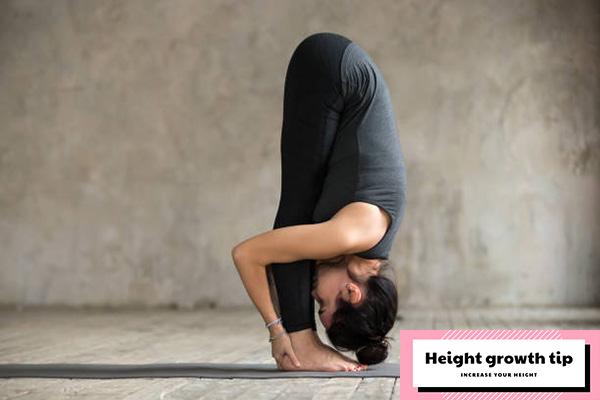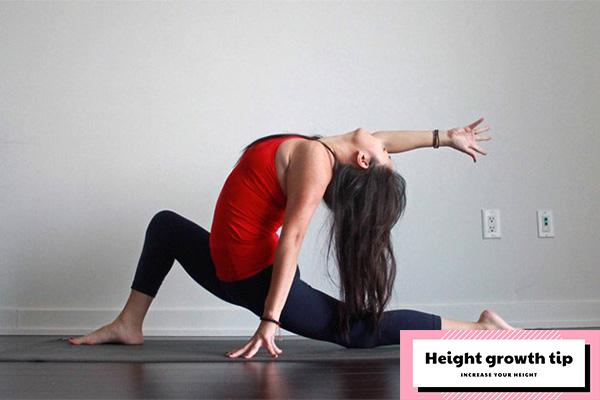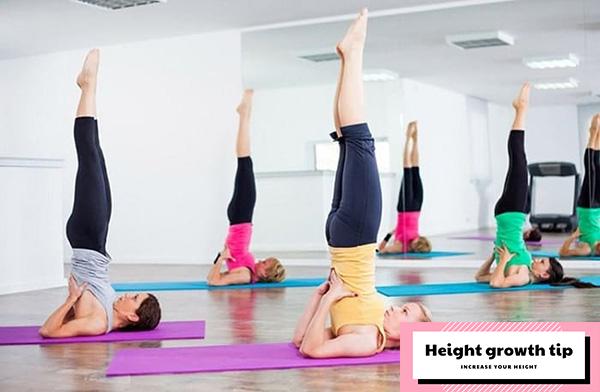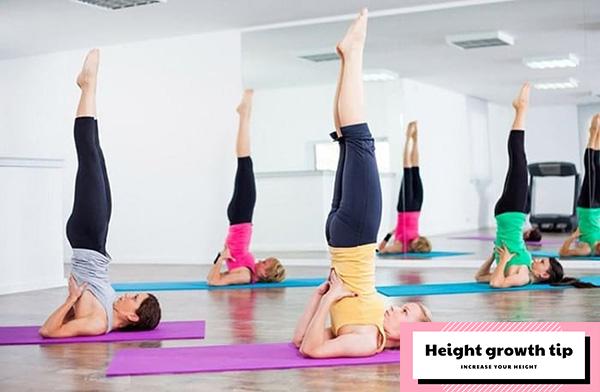In this exploration, we aim to unravel the potential connection between stretching exercises and height augmentation. Could these seemingly simple movements hold the key to stimulating growth hormones and gradually enhancing our vertical dimension? If you’ve ever pondered whether stretching could influence your height, join us on this scientific expedition as we uncover the facts behind this intriguing possibility.
Do stretching exercises help to increase height?
While it is true that stretching exercises may not possess the mystical power to add inches to your physical stature, their impact on your overall appearance, posture, alignment, and muscle flexibility is undeniably transformative.
Stretching exercises serve as emancipators for your muscles, endowing them with a newfound sense of length and relaxation. This, in turn, alleviates the constraints of tightness and cultivates an improved posture, leading you to stand taller and exude a sense of poised self-assurance that is impossible to ignore.
However, it is vital to recognize that the benefits of stretching extend beyond the mere quest for inches on a measuring tape. The practice of regular stretching not only elevates your physical presence but also contributes to your overall health and well-being. While it may not rewrite your height statistics, it undeniably elevates your presence in every sense, figuratively and, to some extent, literally.
List of stretching exercises to increase height effectively
Bend forward
This is a common stretch that helps strengthen your calf muscles. It also stretches your spine, engages your abdominal muscles, strengthens your lower back, and increases flexibility.
Instructions:
- Stand straight with your feet shoulder-width apart and hands in the air.
- Slowly bend forward at the hips.
- Try to touch your feet with your fingertips.
- Keep your knees straight.
- Hold the bent position for 10-30 seconds.
If you can’t reach your feet, don’t worry. Stretch daily, give yourself time, and your body will become more flexible.

Pelvic shift
Sitting for long hours can affect the shape of your spine and impact your height. Therefore, try these pelvic exercises to strengthen your lower back, lower abdominal muscles, and support the muscles around your hips.
Instructions:
- Lie flat on your back.
- Place your hands flat at your sides and keep your feet flat on the floor with your knees bent.
- Press down on your feet and slowly lift your hips off the ground.
- Aim to keep your back straight and hold this position for 3 deep breaths.
- Return to the starting position and repeat 8 to 10 times.
Cobra pose
Your arms, chest, and back are all important for increasing height, and these stretching exercises help strengthen them. Reducing stiffness in the body and developing arm muscles can have a noticeable effect on height growth.
Instructions:
- Lie on your stomach with your legs extended.
- Keep your palms flat by your sides.
- Gently lift your chest and straighten your arms.
- Arch your back as much as possible.
- Begin with 3-4 repetitions, holding each for 5-20 seconds.
Forward spine stretch
Encourage your children to perform this movement for proper spinal alignment.
Instructions:
- Sit up straight with your legs extended.
- Slowly bend forward and try to touch your fingertips to stretch the leg muscles.
- Maintain this position for 10-20 seconds.
- Slowly return to the sitting position and repeat 3-4 times.
Low lunge arch
This stretching exercise helps stretch and tone your back and calf muscles. Regular practice can effectively lengthen the muscles and contribute to an increase in height.
Instructions:
- Kneel with your right foot forward and bend your knee.
- Place your left foot back with the knee touching the floor.
- Raise your hands and join your palms.
- Arch your back and hold this position as long as possible.
- Slowly return to an upright position and lower both hands.
- Repeat with the left knee extended and right knee forward.

Swim on dry land
Instead of swimming, you can try this exercise to support your lower back muscles and tone your arms and calves.
- Lie on your stomach with your body fully extended.
- Extend your arms straight out in front of you with your palms facing down.
- Raise your left arm higher than your right arm while lifting your right leg off the floor. Keep your knees straight and stretch as far as you can.
- Hold this position for 5 seconds and then repeat the process with your left leg and right arm.
- Start with 3-4 sets and gradually increase the repetitions.
Side stretch
Practicing side stretches correctly and regularly can help you increase your height quickly. These stretching exercises promote muscle growth and lengthening, and if done as a warm-up before a workout, they can also burn calories and tone your stomach and waist.
- Stand straight with your feet together.
- Clasp your hands and place your arms overhead.
- Start stretching to the sides alternately.
- Hold each side for about 10 seconds.
- Do 10 sets of this exercise every day.
Calf stretch
The calves play an important role in the overall functioning of the body. Regularly performing this exercise will help tone your calves and potentially increase your height.
- Stand straight with your back against the wall.
- Place your hand on the wall for support.
- Step your right foot forward, keeping your heel on the floor, and bend your knee.
- Push your left leg back and extend it as much as possible.
Pilate’s Scroll
If you want to strengthen your lower abs and gluteal muscles, this technique will help. The more you practice it, the more your spine will become flexible, potentially contributing to increased height.
- Lie on your back with your arms by your sides and palms facing down.
- Extend your legs straight up toward the ceiling at a 90-degree angle.
- Slowly lift your legs and tilt your pelvis back.
- Attempt to lift your legs up and over your head, keeping your feet parallel to the floor.
- Lower your legs gently and repeat 3-5 times.

Hanging from bars
Lastly, try hanging from a bar as this exercise stretches your lower body weight and reduces the compression on your spine.
- Jump up and grab the bar with your palms facing outward.
- Hang in this position for as long as you can.
- Repeat with 20-second breaks, doing it 3-5 times a day.
- Continue this exercise for at least 3 months to achieve optimal results.
When is the best time to stretch for increasing height?
The golden opportunity to embark on a journey toward height augmentation through stretching is nestled within the transformative phase of adolescence. During this remarkable period, the human body is in a constant state of development, with the growth plates in our long bones remaining unfused. It is within this temporal window that the potential benefits of stretching exercises for height increase become most pronounced.
It is crucial to recognize that the window of opportunity for height enhancement through stretching is finite and typically draws to a close in the late teens to early twenties when the growth plates finally consolidate. Beyond this juncture, the feasibility of increasing one’s height through stretching diminishes significantly.
Hence, individuals aspiring to unlock the growth potential afforded by stretching exercises should focus their efforts during the formative years of adolescence, when the body is still undergoing growth and maturation. As with any exercise regimen, it is prudent to seek guidance from a healthcare professional or a qualified fitness expert to ensure the correct technique and safety measures are employed.
- Related post: Does Swimming Make You Taller?

